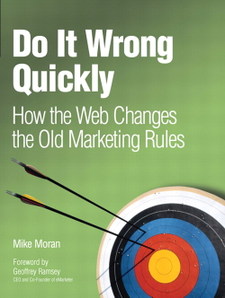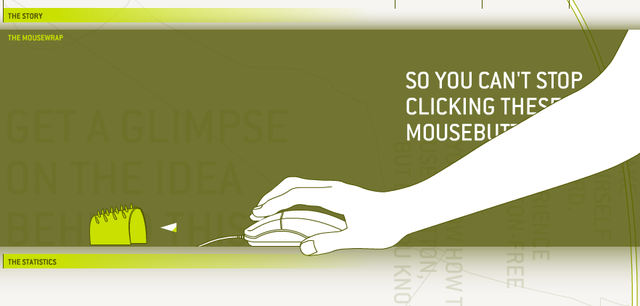Tim Siedell: 15 Steps to Bigger Ideas
November 26, 2007
 Thinking is hard work. When you're up against a deadline or facing a declining sales chart, it gets even harder. Whether you're a business owner or a creative professional, here are some steps you can take to get even bigger and better ideas.
Thinking is hard work. When you're up against a deadline or facing a declining sales chart, it gets even harder. Whether you're a business owner or a creative professional, here are some steps you can take to get even bigger and better ideas.
First things first, however. It's a process.
Creativity is not a magical act. It's a process. Scientists, authors, musicians, and other creative professionals who have studied such things have broken down the creative process into five basic steps:
- Gathering information for the task at hand
- Thinking through various solutions
- Walking away from the problem
- Getting an idea
- Testing the idea
Yep, walk away.
No doubt, the most surprising aspect to this process is step 3. When you think about it, however, you've experienced this firsthand many times. Frustrated by a project, you walk away in disgust. Hours or even days later, you come up with the perfect solution seemingly out of the blue. It's the clichéd shower experience. Your subconscious is an idea machine.
Ten Steps to Bigger Ideas Now
1) Give yourself a target.
The more concretely you define the problem, the more energy you can focus towards a specific solution.
2) Manage the process and deadline.
Don't allow yourself to move onto the next step until the current one is finished. And build time into your deadline to walk away.
3) Find a comfort zone.
Surround yourself with the creature comforts that make you feel most at ease.
4) Attack the white bull.
Hemingway feared the blank page. He called it the "white bull." If Hemingway can fear the start of a project, you can, too. It's natural. Attack your fear head on.
5) Free-associate with abandon.
Robert Frost called an idea "a feat of association." Smash thoughts together. Write down words and see if they connect. Mash, smash, and crash.
6) Actively search for inspiration.
Look into other industries or unrelated fields for sparks of inspiration. Search the web. Look for items that spin you into new directions.
7) Aim low at first.
Nervous about a deadline? Frustrated? Get an easy solution onto that blank page and you'll loosen up and feel more confident.
8) Forget about it.
Seriously. Go to a movie. Take a walk. Move on to another project.
9) Go to sleep.
Research shows that a good night's sleep leads to bigger and better ideas. Let your subconscious go to work.
10) Be willing to kill your babies.
Don't fall in love with your ideas. Try to get as many ideas as possible and then test them without prejudice at the end.
Five Steps to Bigger Ideas Long Term
11) Break out of ruts.
Pick up a trade pub from a different industry. Eat at a new restaurant for a change. Listen to new music.
12) Be a sponge.
The more stuff you have in your brain, the more material you'll have to work with the next time you free-associate.
13) Keep your radar up.
Actively look around you. Carry a journal to record little nuggets of inspiration.
14) Gain confidence.
Confidence is key to any creative person. The more you employ the above steps, the more your confidence will grow.
15) Collaborate.
Working with others will help you grow your ideas exponentially.
Now it's your turn. What steps or tips have you found effective when it comes time to be creative?
Drew's Note: Tim Siedell is creative director and co-founder of Fusebox Brand Communications. His bad banana blog is an excellent daily resource for creative ideas and inspiration (step 6 above). Tim is one of the funniest Twitterers I know…and has very quickly proven to be not only smart but a good guy.
More
![Reblog this post [with Zemanta]](http://img.zemanta.com/reblog_e.png?x-id=bf017585-49c9-4c08-8214-9aab4fc6e0d5)

![Reblog this post [with Zemanta]](http://img.zemanta.com/reblog_e.png?x-id=2ebee54e-ba9c-47f9-9c05-cc22ff238a19)









![Reblog this post [with Zemanta]](http://img.zemanta.com/reblog_e.png?x-id=69b9d265-47b3-473d-a69c-402f1b4ce873)

![Reblog this post [with Zemanta]](http://img.zemanta.com/reblog_e.png?x-id=0ee11aac-0093-4aa4-b113-b7919a8527ad)